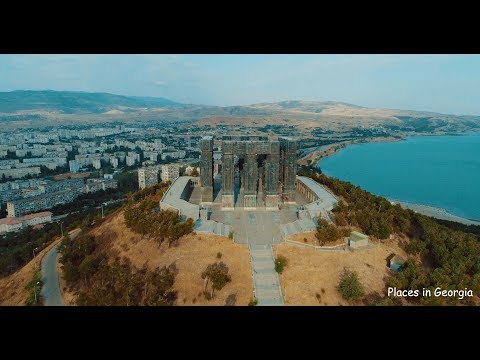CHRONICLE OF GEORGIA,საქართველოს ქრონიკა
#touristdestination #ofwksa #tourpackages #affordabletravel Location The Chronicle of Georgia is located on a small hill where on the outskirts of Tbilisi. Tbilisi is in the Caucasus region, at 41°43' North Latitude and 44°47' East Longitude. It is the capital and largest city of Georgia where located on the banks of the Kura River and has a population of around 1.5 million people. Its location connects Europe and Asia. Thus Tbilisi become one important transit route for energy and trade projects. This city has diverse of different cultures, ethnics, and religions. Tbilisi has more than 100 ethnic groups. About 89% of the population is Georgians, and there are many other ethnic groups including Ossetians, Abkhazians, Ukrainians, and Greeks. (Suny 114) Some of their cultures and ethnics are reflected by the architecture. This city is full of medieval, neoclassical, Beaux Arts, Art Nouveau, Stalinist, Constructivist and Modern structures as it mentioned in the article, “Persian occupation added a new element, and in the nineteenth century Russian domination created a hybrid architectural style visible in many buildings in Tbilisi. The so-called Stalinist architecture of the mid-twentieth century also left its mark on the capital.”[4] History The Chronicle of Georgia records the history of Georgia in detail. “During the first five thousand years of human occupancy, the population of Georgia was scanty and thinly spread” [5] Homo erectus has been living in Georgia and developing slowly since the Paleolithic Era. Also, The earliest evidence of wine has been found in Georgia. “This was the introduction of domesticated plants and agriculture. The advent of plants cultivation is the most important event in the development of any culture-so important this point in European pre-history has been called the ‘Agricultural Revolution’. ”(Sears 5) In the above part, the brewing and pottery technology of the Georgian people is described. “After the beginning of the Christian era, a minor revolution took place in the culture of the sedentary shell-fish eating people. They begin to make pottery!”(Sears 4) Therefore, Georgian pottery-making technology is also demonstrated at the top of the Chronicle of Georgia. Georgia was annexed by Russia in 1783. It was incorporated into the Soviet Union in 1936 and renamed the Georgian Soviet Socialist Republic Georgia SSR). During the Soviet period, Zurab Tsereteli built this monument with Soviet funds. In the early 1990s, due to the collapse of the Soviet Union and the Russo Georgian war, there was a lack of funds, and the monument was never fully completed. Until now, intermittently, work continues on the monument. Religion The Chronicle of Georgia consists of a large part, which is related to religion. Saint Nino, the enlightener of Georgia, was a woman who preached Christianity in Georgia. The grapevine cross is her symbol. The church next to the Chronicle of Georgia is the church commemorating her. She exists in many Churches in Georgia such as the Georgian Orthodox Church. Georgia began to believe in Christianity in 337 AD. This year King Mirian III declared Christianity the state religion. The spread of Christianity made the ancient Georgian characters disappear and replaced them with new characters mixed with Greek orthography and Syriac alphabet. However, the spread of Christianity boosts the growth of literature and arts.

მსგავსი ვიდეოები

ბეშუმი კურორტი | Beshumi,georgia | Бешуми,аджария | DJI 4K
gia surmanidze [gs]

საქართველოს მატიანე / Georgian Chronicle
Lasha Mtvaradze

საქართველოს მატიანე / Georgian Chronicle
Lasha Mtvaradze

საქართველოს მატიანე / Georgian Chronicle
Lasha Mtvaradze

Chronicle of Georgia, საქართველოს მატიანე #თბილისი #საქართვე...
Asif Mamishov

საქართველოს მატიანე / The Chronicle of Georgia 4K
Places in Georgia

საქართველოს მატიანე - The Chronicle of Georgia
George Gogava

მონუმენტი - საქართველოს მატიანე. Chronicle of Georgia
Fly with me